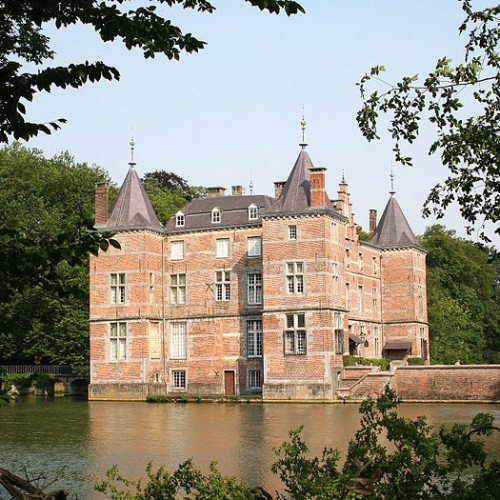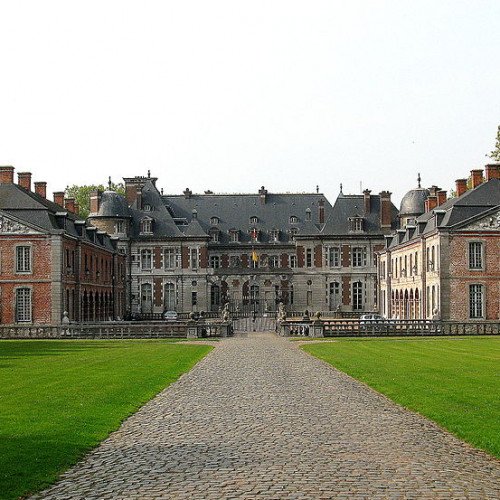Castles of "Belgium" CHÂTEAU D'ANVAING vs CHÂTEAU DE BELŒIL

CHÂTEAU D'ANVAING
Anvaing Castle (French: Château d'Anvaing) or Château de Lannoy is a historic residence in the village of Anvaing in the municipality of Frasnes-lez-Anvaing, province of Hainaut, in Belgium. The site of the Château d'Anvaing has been occupied by a castle since the time of the First Crusade. The first known reference dates from 1127. There is little documentation of the buildings on the site however until the reconstructions of 1561 and 1800. The owners were apparently the Roubaix family, judging from the arms on an early part of the building, and later the de Lannoy family whose descendants still own it. Stéphanie de Lannoy, Hereditary Grand Duchess of Luxembourg, grew up in the castle. The castle is chiefly notable as the place in which the Belgian capitulation was signed on 28 May 1940, during the Battle of the Lys. At the time, it served as the headquarters of the German 6th Army. The Belgian plenipotentiaries arrived at the castle at 9:35 am. Shortly afterwards, General Olivier Derousseaux and Commandant Liagre were received by General Walther von Reichenau and Major-General Friedrich Paulus. Discussions took place in the dining room. At 10:00 am, the surrender became effective. The document was read and signed. In celebration, a German officer fired a gunshot into the ceiling which is still present.
Statistics for this Xoptio

CHÂTEAU DE BELŒIL
The Château de Belœil is a château situated in the municipality of Belœil in the province of Hainaut, Belgium. It serves as the main residence of the princes of Ligne. The château lies in the middle of a Baroque garden designed in 1664. The château and gardens can be visited during spring and summer. Belœil became a possession of the Ligne family in 1394. At the beginning of the 15th century, the local castle was chosen as the principal residence of the family. The old castle was a fortified rectangular building with a moat surrounding it and had four round towers, one at each angle. This basic structure is still preserved, although the facades and interiors were greatly altered during the following centuries. The fortified castle was adapted into a luxurious country house (château), following the French example. The interiors were appointed with fine furniture and the art collection of the family. During the New Year's celebrations of 1900, disaster struck the château when it burned down completely. Most of the furnishings, including the library of 20,000 rare volumes and the art collection, were saved. The château was rebuilt in the following years by the French architect Ernest Sanson, while the interiors were redecorated using pieces from the Ligne collections.